Dr Hernando Lopez-Bertoni – Tackling Aggressive Brain Cancer With MicroRNA and Nanoparticles
Glioblastoma multiforme is an aggressive and life-threatening form of brain cancer. Although some treatments are available to provide comfort and prolong life, it remains an incurable and devastating disease. With the goal of advancing diagnostics and treatments for glioblastoma, Dr Hernando Lopez-Bertoni is carrying out exciting research at the Johns Hopkins University School of Medicine. Taking on board the cancer stem cell hypothesis, Dr Lopez-Bertoni has made fascinating discoveries into how miRNA genetic material can be utilised and how it could be delivered to the brain via nanoparticles.
Glioblastoma: An Aggressive Brain Cancer
Glioblastoma multiforme is an aggressive, fast-growing and fast-spreading type of brain cancer. Although brain cancers as a whole are relatively uncommon, glioblastoma are the most common type of malignant brain tumour in adults. Usually starting in the largest area of the brain – the cerebrum – star-shaped cells called astrocytes build up to form glioblastoma. As they create their own blood supply, it is easy for these tumours to grow and invade adjacent brain tissue.
The rapidly growing nature of glioblastoma and the resulting pressure on the brain means that the first symptoms that appear are often constant headaches, difficulty thinking and speaking, blurry vision and unusual changes in mood or personality. Once a patient sees a doctor with these issues, they should be sent for an MRI or CT scan so any masses in the brain can be found.
Unfortunately, there is no complete cure for glioblastoma and it can be very difficult to treat, but the symptoms can be eased and patients can be put into periods of remission with certain therapies. Surgery is the initial option, whereby a surgeon tries to take out as much of the tumour as possible without damaging important structures of the brain. This is near impossible in some areas, meaning not all of the tumour can be removed. Radiation therapy and sometimes chemotherapy can be used to try to kill the leftover tumour cells or tumour pieces after surgery.
Other, innovative treatments are sometimes available. A method called wafer therapy involves implanting a biodegradable disc into tumour left over after surgery, which then slowly releases chemotherapy. Another method is called electric field therapy, which targets tumour cells with an electric field via electrodes on the scalp. However, the main goal of all treatments for this brain cancer is to slow down and control the tumour growth and to allow a patient to be comfortable; sadly only 5% of patients survive more than five years after diagnosis.
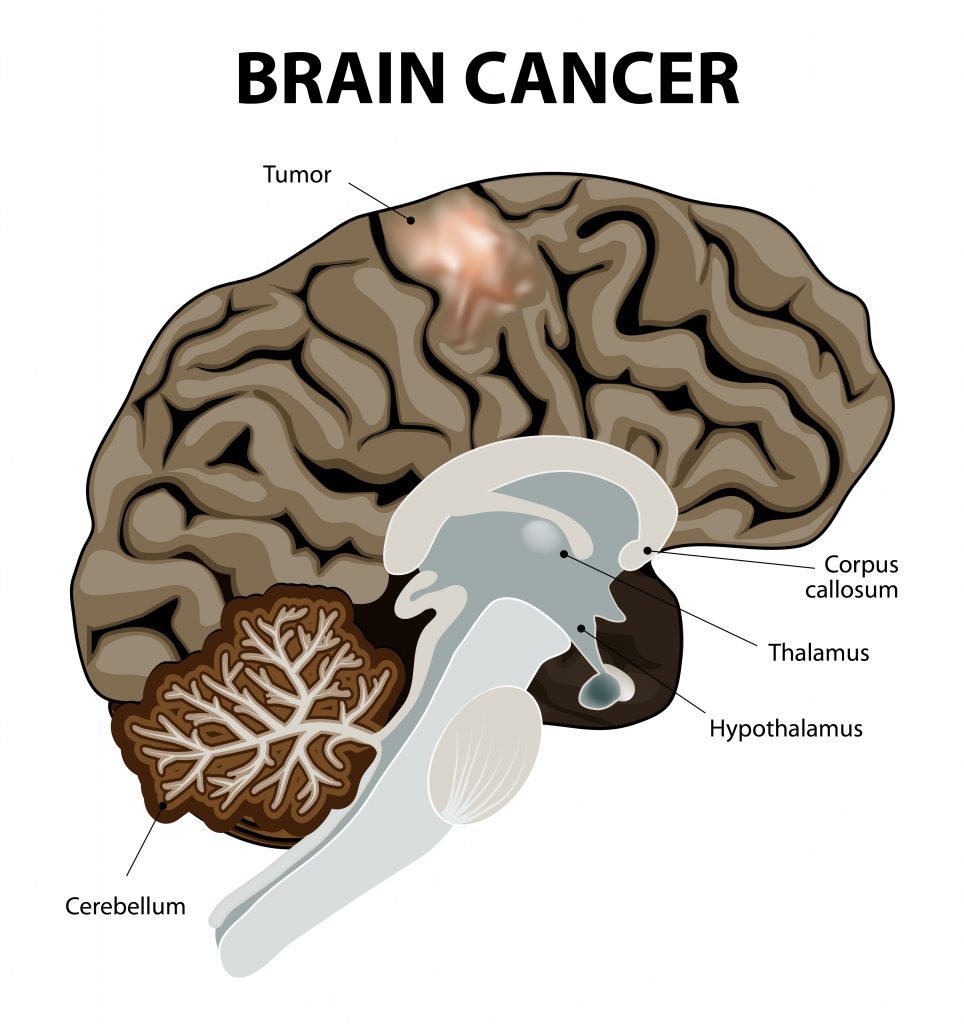
The Cancer Stem Cell Hypothesis
Although the outlook of glioblastoma seems bleak, ongoing clinical trials are in progress testing novel and innovative therapies. These treatments are the result of extensive, dedicated research of scientists all over the world. One such researcher is Dr Hernando Lopez-Bertoni at Johns Hopkins University School of Medicine in Baltimore, Maryland. Within the Lopez-Bertoni Lab in the Department of Neurology, Dr Lopez-Bertoni and his team, along with collaborators, investigate the underlying, molecular mechanisms behind brain tumours. They hope that their work will be incredibly useful for designing new, advanced and targeted therapies for the disease.
An underlying theory to Dr Lopez-Bertoni’s work is the Cancer Stem Cell Hypothesis. This theory suggests that the cells that make up tumours can be found at different levels of maturity (or differentiation), similar to normal, healthy tissue. Therefore, there is only a relatively small number of multipotent neoplastic stem-like cells that can multiply to form tumours. In more simple terms, these are cells that can divide into lots of different types of cells (like stem cells) to form an abnormal growth (a neoplasm). If this is the case, then eradicating the original cells that cause cancer, the ‘cancer stem cells’, could be an effective method of treating tumours and preventing them from returning.
Research has shown that these cancer stem cells are in fact present in most cancer types and they are largely responsible for tumour re-growth. Due to the adaptable, or plastic, nature of these cells they can divide to alter their growth rate and survival mechanisms to resist therapy and encourage tumour growth. This is why they are a primary target for Dr Lopez-Bertoni, who studies how these cells grow and divide in order to exploit their vulnerabilities and control their spread. His work involves delving into the genetic and molecular levels of the cell.
‘We want to expand upon our current experimental model and conceptual paradigms and identify miRNAs and tumour suppressive pathways capable of inhibiting GBM stem-like tumour-propagating phenotype and apply that knowledge to develop new therapeutic approaches.’
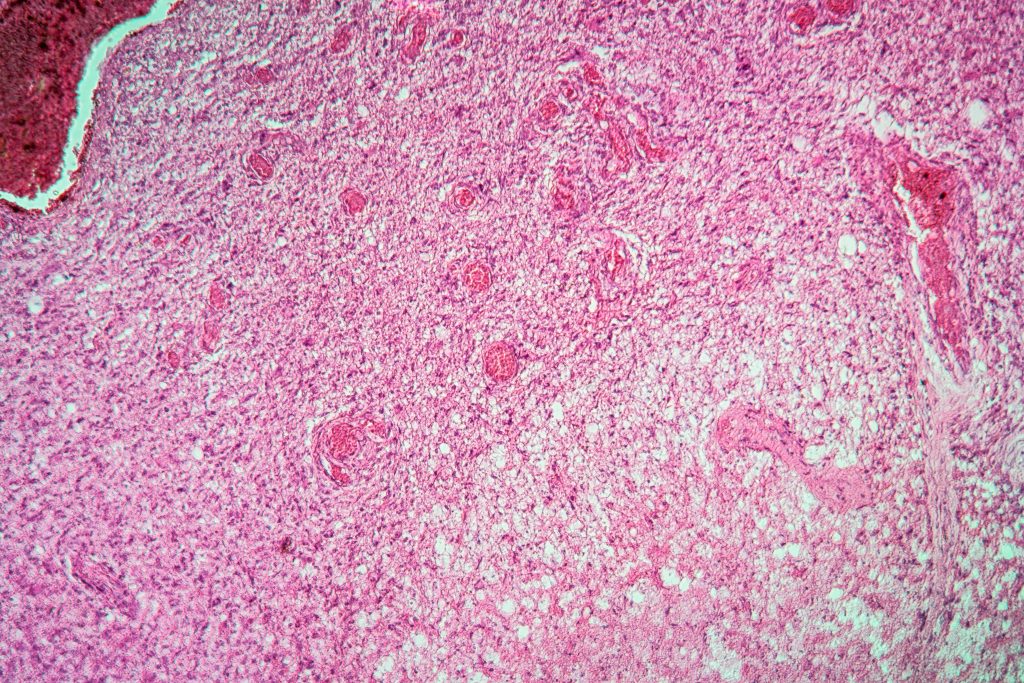
Diseased tissue from a tumour in the brain
MicroRNAs and Tumour Suppressive Pathways
One of the tiny components of interest to Dr Lopez-Bertoni are microRNAs (miRNAs). These are short, single-stranded lengths of genetic material that do not code for anything but do play an important part in regulating gene expression. This means that they help to decide which genes are decoded to form proteins that make up the structure and the function of the cell. Importantly, the disrupted function of miRNAs has been proven to be a large causative factor in multiple different diseases, including cancer.
Research from Dr Lopez-Bertoni demonstrated that this is because the miRNAs regulate huge networks of gene expression. But at the same time, the process of making the miRNAs themselves can be altered which also impacts how the system works. According to Dr Lopez-Bertoni, ‘We want to expand upon our current experimental model and conceptual paradigms and identify miRNAs and tumour suppressive pathways capable of inhibiting GBM stem-like tumour-propagating phenotype and apply that knowledge to develop new therapeutic approaches’.
Studies from his lab have given evidence that encouraging miRNAs that suppress tumours or inhibiting those that facilitate tumour growth can be an effective method of normalising dysregulated molecular networks. For example, in a recent study, Dr Lopez-Bertoni newly identified a molecular mechanism that leads to glioblastoma.
This mechanism involves two transcription factors that also regulate which genes are allowed to be decoded into proteins, including those that code for miRNA strands. These transcription factors, called Oct4 and Sox2, repress specific miRNAs, which he found leads to the development of cancer cells in the brain. Dr Lopez-Bertoni also discovered that reintroducing the repressed miRNAs into the stem-like glioblastoma cells, prevented them from acting like cancer stem cells. This was seen through a much-reduced ability to spread and a longer survival time in their animal model.
These exciting results reveal a promising approach to treating tumours. Dr Lopez-Bertoni believes that by identifying regulators of the molecular mechanisms within cancer cells, they can be targeted to create more effective therapies for glioblastoma.
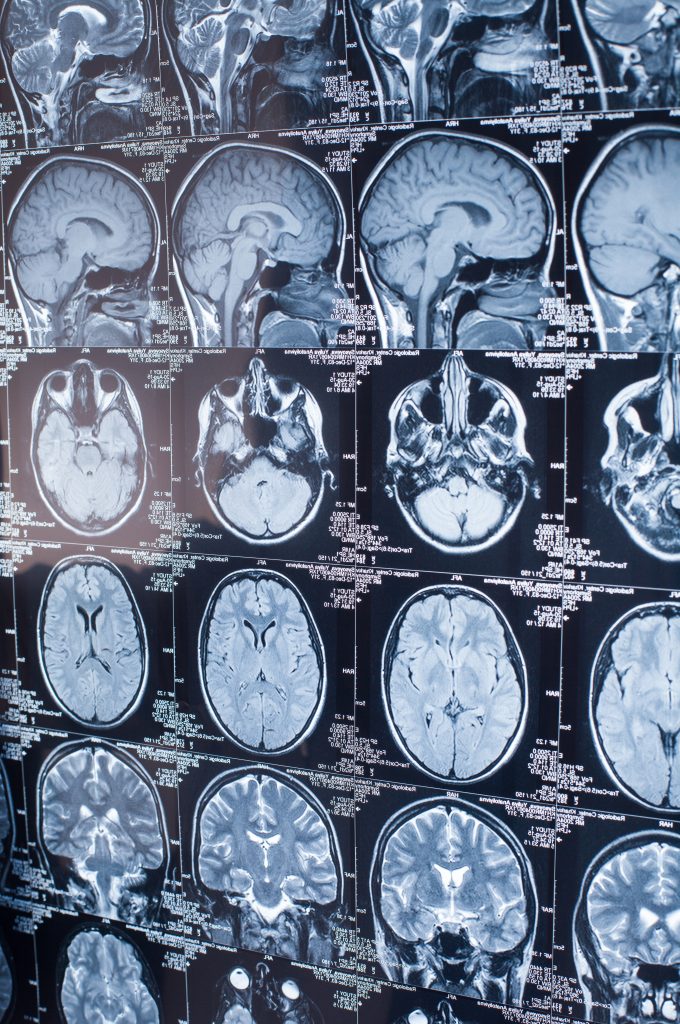
A Small But Effective Delivery
Even if effective targets for glioblastoma can be identified, it is not always simple to get to them with drugs. This is because our brains are a highly protected organ – the skull, cushioning fluid and layers of special membranes all play a part. Within these membranes is what is known as the blood-brain barrier, which is a boundary between circulating blood and the brain itself. This barrier is highly selective, so it only permits the necessary nutrients and compounds through, thereby blocking toxic substances from affecting the brain.
While this is an essential function, it can create an issue for drug delivery. Many drugs would be too large or not allowed through the blood-brain barrier, so inventive solutions are needed to transport therapies into tumour-affected brains. This was the work of Dr Lopz-Bertoni in collaboration with Dr Jordan Green, also at the Johns Hopkins School of Medicine. In a pioneering experiment, they made tiny packets of the miRNA Dr Lopez-Bertoni had studied, wrapped in a biodegradable plastic similar to surgical sutures. These packets were so tiny they were 1,000 times smaller than the width of a human hair, which meant that they were small enough to pass through a blood-brain barrier.
Once the packets reach a brain cancer cell, they engulf it and it breaks apart to release the miRNA inside. As a result, the therapy is administered right into a glioblastoma, where it can take action against it.
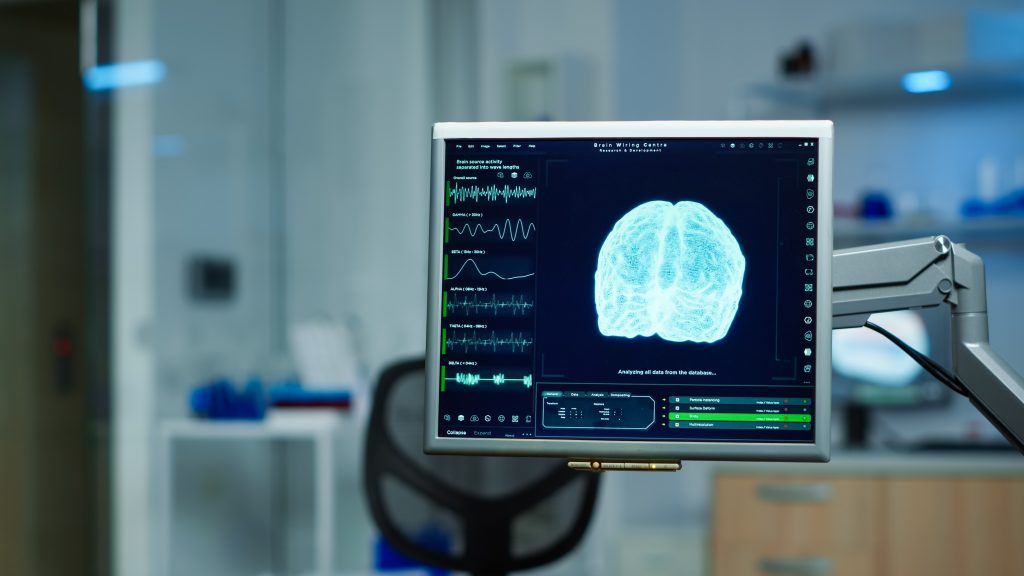
Positive Results for MicoRNA and Nanoparticles
This was clearly seen in their tests, in which they implanted human glioblastoma cells into mice and waited until they had established tumours. Half of the mice were given medicine that contained tiny packets of active miRNA and the other half contained inactive miRNA. The mice that received the active miRNA lived significantly longer on average than the others and either had very small or no brain tumours at all.
Dr Lopez-Bertoni believes one reason this method could be so effective is that miRNAs can target multiple gene networks, in contrast to many other genetic medicines that only target one gene. By giving them direct access to the target cells and dysregulated genetic systems with nanotechnology, they could be a hugely promising solution to glioblastoma. In the future, he hopes to look further into how the blood-brain barrier could be overcome with ultrasound technology to enhance the uptake of nanoparticles.
Although Dr Lopez-Bertoni has already made significant contributions to his field of neurology, he is continuing to innovate and build on his work. He shows that studying the cellular mechanisms that cause glioblastoma can lead to inspiring new insights into how even currently difficult cancers to treat, may be less threatening in the years to come.
Reference
https://doi.org/10.33548/SCIENTIA746
Meet the researcher
 Dr Hernando Lopez-Bertoni
Dr Hernando Lopez-Bertoni
Department of Neurology
School of Medicine
Johns Hopkins University
Baltimore, MA
USA
Dr Hernando Lopez-Bertoni achieved his BSc in Biology/Microbiology/Pre-Med degrees at Kansas State University before moving to the University of Nebraska to complete a PhD in Cancer Biology. He then went to Johns Hopkins University School of Medicine in Baltimore, Maryland, to carry out his postdoctoral training in cancer stem cell and brain tumour biology. This is where he currently serves as an Assistant Professor, based in the Department of Neurology, conducting research into brain tumour biology and investigating new ways to treat brain cancer. His work focuses on understanding the molecular mechanisms behind brain tumour formation and how this might be used to develop new diagnostics and treatments.
CONTACT
E: mherna16@jhmi.edu
W: https://www.lopez-bertonilab.com/
Twitter: @HernandoLop
KEY COLLABORATORS
John Laterra, MD, PhD
Professor of Neurology, Johns Hopkins University
Co-Director, Brain Cancer Program, Johns Hopkins Sidney Kimmel Comprehensive Cancer Center
Jordan J. Green, PhD
Professor of Biomedical Engineering, Johns Hopkins University
Director, Biomaterials and Drug Delivery Laboratory
FUNDING
National Institutes of Health
National Institute of Neurological Disorders and Stroke
National Cancer Institute
American Brain Tumor Association
FURTHER READING
H Lopez-Bertoni, J Laterra, Opinion-: miRNAs – The new wave of molecular cancer therapeutics, Translational Oncology, 2021, 14(6), 101064.
H Lopez-Bertoni, J Laterra, Targeting the Cancer Stem Cell (CSC) Phenotype: Uprooting the Evil Seed, Journal of Experimental Neurology, 2020, 1(4), 173–181.
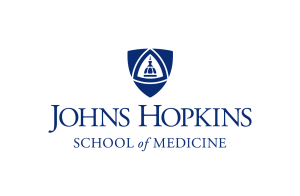
Want to republish our articles?
We encourage all formats of sharing and republishing of our articles. Whether you want to host on your website, publication or blog, we welcome this. Find out more
Creative Commons Licence
(CC BY 4.0)
This work is licensed under a Creative Commons Attribution 4.0 International License. 
What does this mean?
Share: You can copy and redistribute the material in any medium or format
Adapt: You can change, and build upon the material for any purpose, even commercially.
Credit: You must give appropriate credit, provide a link to the license, and indicate if changes were made.
More articles you may like
Grandmothers: Innovation Through Tradition
Grandmother Project – Change through Culture (GMP) is an organisation dedicated to documenting the role of grandmothers and demonstrating the effectiveness of grandmother-inclusive strategies in improving the health and well-being of women, children, and adolescents. GMP’s groundbreaking work challenges conventional wisdom to transform community-based interventions in Africa and beyond, harnessing a powerful but often overlooked resource: the wisdom and influence of grandmothers.
Dr Robert Larkin | Cultivating Change to Improve Soil Health and Increase Potato Yield
Environmental quality and food production are facing the pressing challenges of climate change and global population growth. Dr Robert Larkin from the United States Department of Agriculture-Agricultural Research Service (USDA-ARS) and a team of plant scientists developed and tested a range of crop management systems to help overcome these compounding challenges. Their work is improving soil health and increasing the yield of potato crops, contributing to the future food security of nations.
Professor Giorgio Buttazzo | Artificial Intelligence and a Crossroads for Humanity
Where do we stand with artificial intelligence? Might machines take over our jobs? Can machines become conscious? Might we be harmed by robots? What is the future of humanity? Professor Giorgio Buttazzo of Scuola Superiore Sant’Anna is an expert in artificial intelligence and neural networks. In a recent publication, he provides considered insights into some of the most pressing questions surrounding artificial intelligence and humanity.
Dr Ralf Adam | New Technologies Shaping the Future of Oral Hygiene
Understanding the efficiency of various toothbrush technologies is essential for achieving optimal oral health. Dr Ralf Adam, who leads a dedicated team at Procter & Gamble in Germany, is keen to investigate the complexities of these technologies. His team have provided new insights into the best toothbrush types for plaque removal and the maintenance of gum health. By highlighting the importance of informed oral care decisions and ongoing investigations, this vital research works towards ensuring everyone can achieve a brighter, healthier smile.




